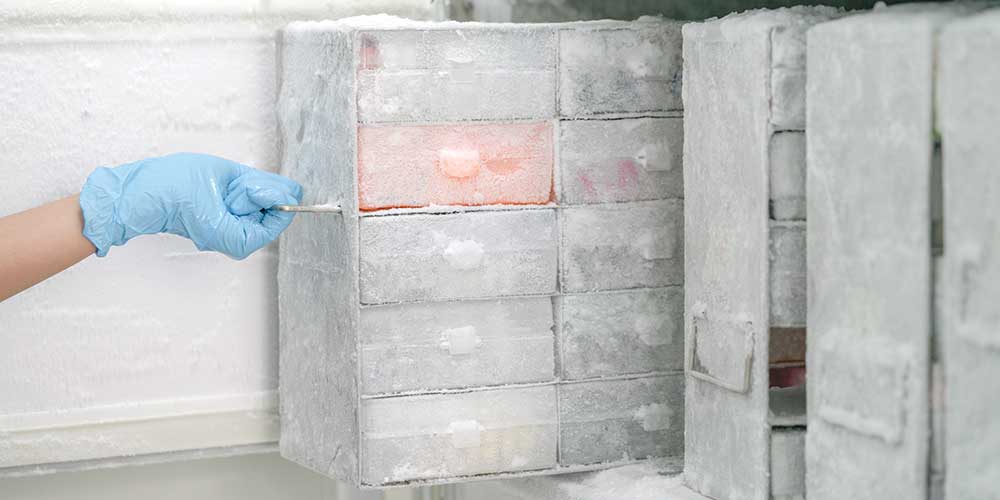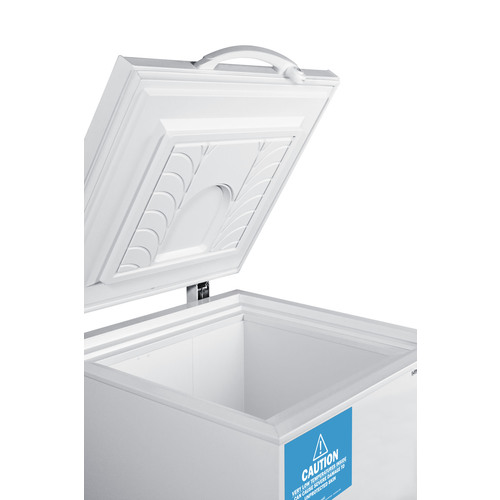
How to Specify a Super Cold Freezer
Across a range of biological and medical research as well as industrial applications there are many areas where what can be termed a super cold freezer is required. Examples include long-term storage of pharmaceuticals and biological specimens, and for testing a product’s ability to perform in super-cold environments such as to -85˚C.
Selecting an ultra-low freezer involves carefully considering the nature of your requirements including the quantity and types of products being stored, required storage temperatures, and frequency of access.
So with this, let’s take a look at how specify a super cold freezer.

What is Meant by Ultra-Low Freezers?
As you know from your visits to the appliance section of home improvement stores, there are many types of freezers on the market. These are not candidates for your application.
Different terms apply when specifying scientific (not commercial or household) freezers. Manufacturers such as Corepoint Scientific, accucold and So-Low products offered by Tovatech define the temperature capabilities of their various models differently.
- Scientific laboratory and pharmacy freezers can control ranges from -10⁰ to -25⁰C (+14⁰ to -13⁰F)
- Low temperature freezers depending on the model and function: to – 25⁰, -35⁰ or -40⁰C (-13⁰, -31⁰, -40⁰F) minimum, also with a user-controlled range
- Ultra-low temperature freezers control temperatures down to -86⁰C (-186.5⁰F) also with precise temperature control
How much “Cold” do you Really Need?
Base your decision on the recommended storage temperature for what you put in your freezer. Our next section provides some examples. But keep this in mind:
Just as with your room or central air conditioner, a colder setting means a higher power consumption. But don’t stint: the most important consideration is the proper storage temperature of the contents.
Keep in mind as well that when you access the unit you allow ambient-temperature air to enter. We’ll get into that later.
Typical Applications for Ultra-Low Freezers
Ultra-low temperature freezers find wide application in
- research universities
- medical centers and hospitals
- blood banks
- preserving biological samples and for long-term evidence storage
- establishing performance specs for parts used in extreme cold environments
As to more specific examples of the above, ultra-low temperature freezers are used to store biological samples such as DNA/RNA, plant samples and insect artifacts, autopsy materials, blood, plasma and tissues, chemicals, drugs and antibiotics.
Manufacturing firms and performance testing labs use super cold freezers to determine the ability of products and machinery to perform reliably under severe low temperature conditions such as found in Arctic and Antarctic regions.
These myriad applications suggest that ultra-low temperature freezers may house multiple and different experiments, some of which may require frequent checking while others remain undisturbed for lengthy periods of time. And in fact if they do, this becomes a feature that can be applied to your selection process.
What to Look for in a Super Cold Freezer
Here we’ll cover some of the more important things to keep in mind when you go shopping for an ultra-low temperature freezer (also called ULT freezers).
Temperature Control
As suggested above, the lower you set the thermostat on a ULT freezer (or any freezer for that matter) the more energy it consumes to maintain that temperature. So again, it is a smart idea to match the temperature capability to storage or environmental testing recommendations.
The key is a precisely adjustable thermostat.
Temperature Excursion Alarming
High efficiency insulation plus cabinet- and door-mounted gaskets contribute to energy-efficient performance. But things can go wrong in which case an alarming system should provide an immediate alert, and it should be functional in a power outage.
Ultra-Low Temperature Record Keeping
An example of the critical importance of record keeping is found in Section 3 of the CDC’s Vaccine Storage and Handling Toolkit. Accurate record keeping when storing valuable and/or temperature-sensitive products is critical, and should be a feature of any scientific refrigerator or freezer.
Isolating Specimens
When you open a freezer door you provide access for ambient temperature air. This makes it advisable to select a low temperature freezer with separate internal compartments.
Compartments can be fitted with optional individual specimen racks to hold separate containers that in turn can accommodate cell dividers.
Selecting your Ultra Low Freezer Size
How much storage capacity do you really need? Freezers in general operate more efficiently when they are full. This is because the contents help stabilize holding temperatures.
The criteria for size should also take into account space available (i.e. footprint). Tovatech scientists can help you make a selection. In brief, however, interior volumes can range from 13 to 30 cubic feet for upright models and 2 to 27 cubic feet for chest models.
And Some Sound Advice
Have a backup plan in place in the event of a power failure. Most upright and chest freezers can be specified for 115-volt power requirements, so a backup generator is a good first step to maintain power to the unit. In the rare occasion of equipment failure a backup low-temperature freezer should be available.
Need more Super Cold Freezer Info?
Tovatech offers a broad range of upright, undercounter and countertop scientific refrigerators and freezers. Contact our scientists for unbiased recommendations to help you select a unit that delivers long-term, reliable, temperature-critical storage of valuable products and samples.
